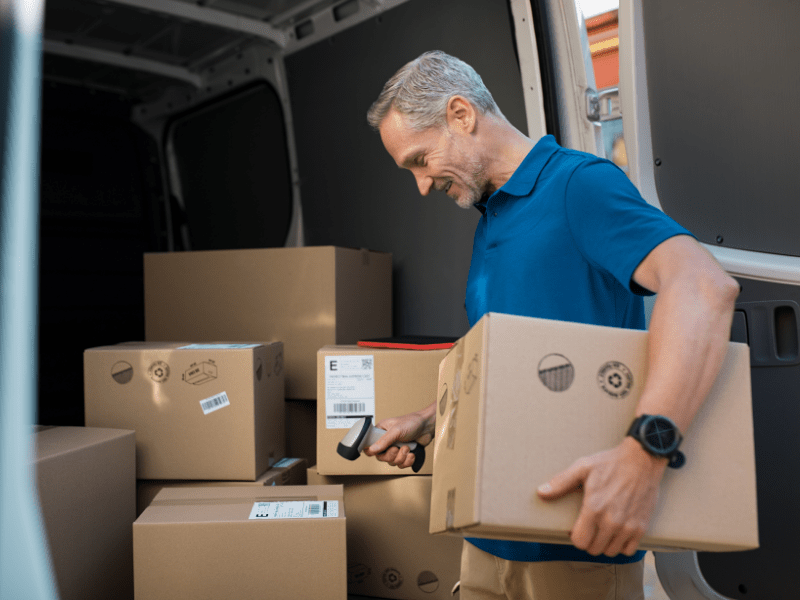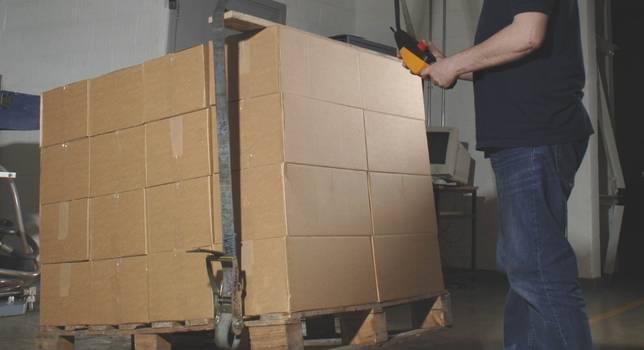How does the ecommerce supply chain differ to more traditional formats?
JW: In traditional supply chains the whole system is geared around moving products off the manufacturing line and onto the retailer shelf as cost effectively as possible in order to meet consumer demands. Such supply chains generally involve large volumes of products, and the number of repeat deliveries through the system is generally high. This results in products being packaged to optimise bulk handling and transport, with products moving through relatively small numbers of touch points to reach a retail store.
By comparison, in ecommerce supply chains the quantity of a product transported in any single shipment can vary depending on consumer need (as few as a single unit), but is significantly fewer than in traditional supply chains, while the destination could be potentially anywhere across the globe. This breadth of potential destinations means the number of touch points between manufacturing point and customer can be many times greater than traditional supply chains.
MK: The supply chain for e-commerce in the US is very similar to the European model. Multiple distribution centers and touch points for packages that span from the original manufacturer of the product to the end customer create a challenge for anticipating shipping hazards and effects on packaging. At two to three times the number of touches from start to finish, packages in the e-commerce supply chain are exposed to both machine and human handling, multiple modes of transportation (e.g. plane, pallet loads on trucks, small parcel trucks, etc.) as well as the possibility of being packed, repacked and packed with other products in larger boxes.
In many cases, traditional package design for the retail shelf is not sufficient for the e-commerce channel. Generally, designers can get away with slightly less robust, more uniquely designed packaging on the store shelf, while they may need to strengthen, change materials or redesign the look of packaging that will be sold online and shipped direct to consumers.
How have consumer expectations and demands shaped packaging for online retailers?
JW: There are three key areas where consumers have set expectations for online retailers: delivery, packaging performance and waste impact.
For the delivery, consumers expect their product to arrive promptly and specifically within the timescale stated on the retailer’s website. While this typically doesn’t have a direct impact on the packaging, the choice of shipping method selected can mean additional transport challenges need to be considered. Delivery performance is often a source of competitive advantage in the ecommerce environment.
Packaging performance is more subjective. As would be expected, packaging that doesn’t protect the product from damage clearly isn’t suitable, which can mean reserve logistics considerations, repeat delivery not to mention the impact on consumer perception of the product quality and the supplier quality. In addition Smithers' research has shown that damage to the packaging can negatively impact consumer response even if the product itself is well protected. This is a complex response dependant on a range of factors, such as product type, product value, nature of the damage and the severity.
Over the past few years consumers have become more environmentally aware, so there’s a shift towards using both recycled and recyclable packaging, and towards reduced packaging. Consumers don’t want the inconvenience of having to dispose of excessive packaging or non-recyclable packaging. There is a trend towards the Amazon-led model of ‘frustration free’ packaging.
MK: Brand perception is critical to companies selling their products through the e-commerce channel. Where a retail environment may limit the number of competitive products on the shelf, e-commerce presents an almost unlimited number of competitive products with online reviews and varying price points. When the consumer receives it, their ability to quickly access and use the product without damage or complication is extremely important to the brand experience.
In addition, to James’ point, too much packaging can also send a negative message of wastefulness for the online retailer. Consumer opinion has shifted greatly over the years towards being mindful of the environmental impact of their daily activities. Receiving a new set of Bluetooth headphones in an oversized box with lots of packing materials can make consumers question where they buy their products online next time.
What physical elements do companies need to consider when choosing packaging for products which will be part of an ecommerce supply chain?
JW: There are many factors that should be considered when choosing packaging for ecommerce and there isn’t a one-size-fits-all answer to what is the most suitable.
The ecommerce supply chain presents significantly different physical challenges to products and packaging compared with traditional supply chains. In ecommerce the small size and low volumes mean products are almost exclusively manually handled compared with the predominately mechanical handling used in traditional supply chains. This manual handling is generally more numerous and more severe than mechanical handling. Mixed loading often occurs in ecommerce supply chains, potentially in any orientation (so the product could be upside down) whereas in traditional supply chains the products are all in the same orientation.
It is import to understand the intended ecommerce shipping routes as much as possible as this, along with the physical properties of the product, can help make informed choices as to suitable packaging.
As a provider of physical packaging performance testing services Smithers is seeing an increase in the number of our customers (brand owners, packaging users and packaging manufacturers) trying to understand the physical implications of ecommerce supply chains. Customers with extensive experience with developing packaging for tradition supply chains are effectively going back to the beginning when it comes to choosing and designing packaging for ecommerce.
MK: There’s a wide variety of considerations that brand owners must evaluate when designing packaging for e-commerce; from the materials being used in the packaging, to the thickness of the material and support within the primary packaging. Of course, as with all package design projects, overall cost, sustainability and durability must be considered. In order to properly evaluate the package, both standard and custom testing protocols can be used to dial in the design.
ISTA (International Safe Transit Association) has worked with the packaging industry and Amazon.com to develop a new set of protocols to properly evaluate packaging for successful transit through this complex supply chain. ISTA 6 Amazon.com (SIOC – Ships in Own Container) and ISTA 6 Amazon.com – Overboxing protocols consider the two most common shipping situations. Through the use of environmental conditioning, drop tests, vibration and leak tests (for products with liquids), brand owners can simulate the real-world environment in the laboratory before releasing their product for sale.
Why is the ecommerce supply chain so challenging for manufacturers and retailers?
JW: The ecommerce environment represents a shift in thinking when it comes to choosing and designing packaging, compared with traditional supply chains. The variability in transport loads combined with the smaller shipment sizes, large shipment quantities to varied destinations mean that manufacturers and retailers need to model various different scenarios to see how their product and packaging performs. Laboratory based transport simulation testing offers one way of qualifying products and packaging for ecommerce supply chains.
It is also worth considering that the success of large online retailers such as Amazon in meeting customer expectations when it comes to packaging suitability has had a knock on effect for small and medium online retailers, as consumers expect the same level of service from these retailers as they get from the larger retailers.
Find out more about our
distribution testing services.



